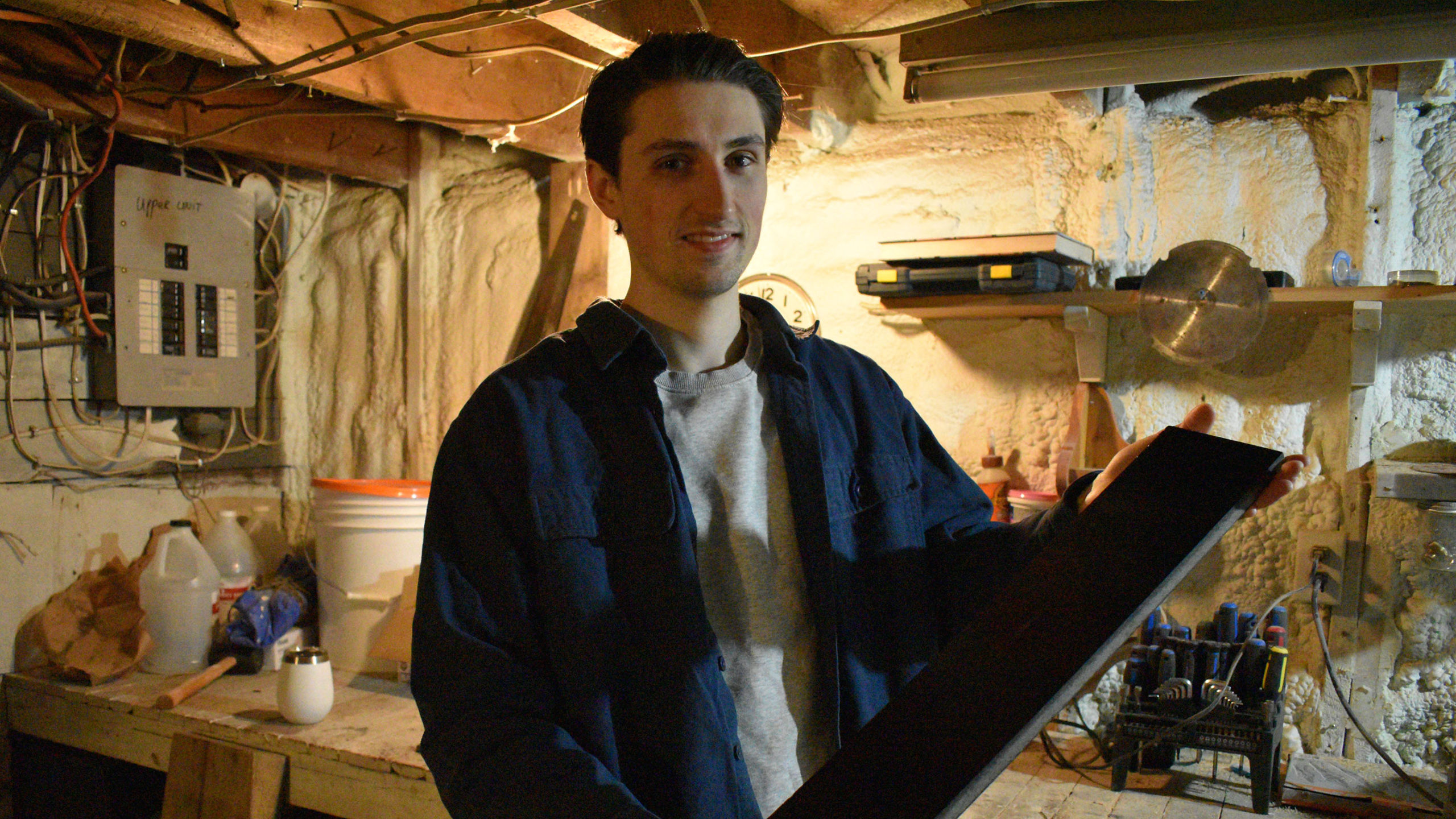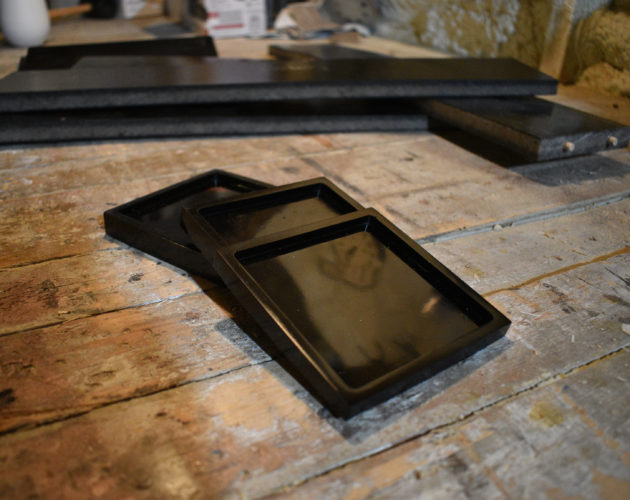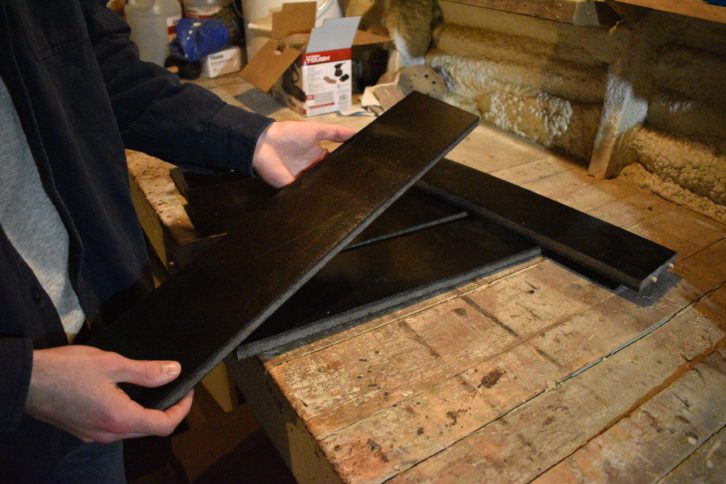Dal student gives new life to used coffee grinds
Quinn Cavanagh turns beverage waste into building materials

caption
Quinn Cavanagh holds a sample of his bio composite material made from spent coffee grinds in Halifax. Cavanagh is the brains behind Rfine, a startup created to extend the life cycle of urban waste.Most of us think of the trash bin when we look at spent coffee grinds, but Quinn Cavanagh sees potential building material. The Dalhousie chemical engineering student is using coffee waste to develop bio composite that he’s using to build a coffee table.
“Every element of it, even from the legs to the tabletop, is made from coffee,” Cavanagh said from his friend’s Halifax workshop, where The Signal got a look at several prototype components.
“One table alone could displace over 1,500 grams of coffee that would otherwise have reached the landfill,” Cavanagh continued.
The budding entrepreneur has already attracted positive attention. Last year his coffee grind bio composite won first place and a $5,000 prize at the Saint Mary’s Circular Economy Challenge.

caption
These coffee bio composite coasters won Quinn Cavanagh first place in the Saint Mary’s University Circular Economy Challenge.The win led Cavanagh to create a startup, Rfine, aimed at repurposing urban waste in a process known as upcycling. He said he eventually wants to branch out to other materials, such as construction waste, but that for now coffee grinds are more logistically straightforward.
Valuable biomaterials typically have to be separated from the waste in which they’re buried, but spent coffee grinds are often concentrated in one batch.
“Coffee shops right now throw away mostly coffee waste, and their organics are probably 99 per cent coffee anyway,” Cavanagh explained.
He said the upcycling idea came to him while he worked as an intern at a food delivery service, where he was tasked with maintaining a coffee machine.
“There was so much coffee thrown out every day,” Cavanagh recalled. “It’s kind of an obvious choice for abundant waste.”
Other than the deep black tone, you would be hard pressed to tell the bio composite is made of coffee. Finished samples have a glossy, ceramic-like appearance. And the spent grinds can yield more than just building materials.
Cavanagh said the residual oil could be used as a biofuel or essential oil. This means a lot more of the material would be used than if it was just thrown in the compost bin.

caption
Table legs made out of a coffee bio composite in Halifax. They are part of a planned coffee table prototype.“It can be a bit problematic for compost, it’s an acidic product, right?” he said, adding that coffee grinds can potentially damage certain plants.
The upcycling idea got an endorsement from Gordon Neal, a long-time Halifax businessman. Neil once worked alongside Cavanagh and now he mentors the young entrepreneur.
“I think it’s a fantastic idea,” said Neal. “Global coffee production last year was something in the 10-billion-kilogram range. And after the coffee beans are ground up and water passes through them, they weigh about double that. So approximately 20 billion kilograms of spent coffee is going to landfills. That’s a problem. And, he has a solution to a part of that problem.”
Cavanagh said he hopes he can attract investors and soon start selling his services and products to coffee shops. But for now, he’s still focused on trial-and-error development. Cavanagh is currently working on prototypes in his friend’s basement workshop in Halifax, adding he hopes to be part of a new trend of businesses getting serious about sustainability.
“These coffee shops, the scale of the waste that they’re generating is so much more than individuals, that there is some intervention that needs to be done,” he said. “We can carry this kind of at-home remedy sort of approach to sustainability on a much larger scale and make a much larger impact.”
About the author
Giancarlo Cininni
Giancarlo Cininni is completing his fourth year of the BJH program. He has experience reporting in Brazil and Canada. When he is not staring...
